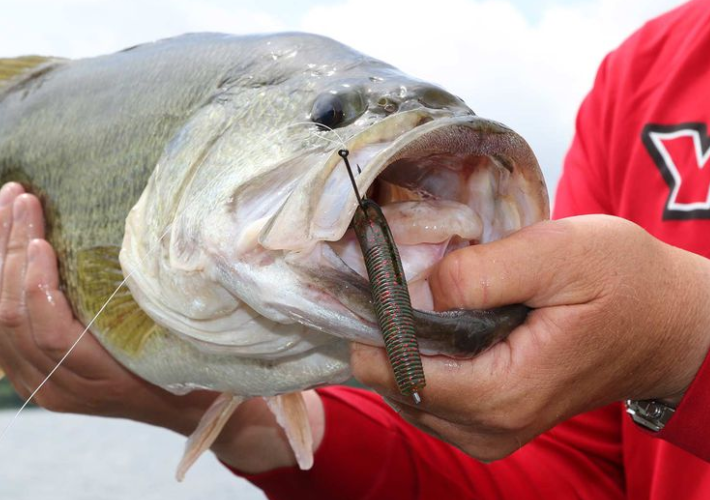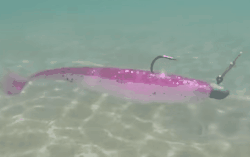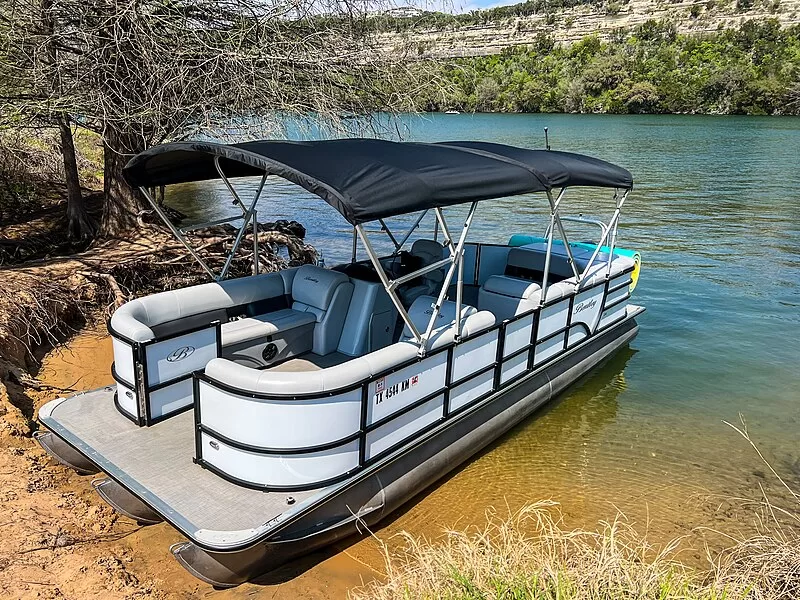If you frequent our website, you might’ve recently read our article on rigging soft plastics. We’ve since received many questions from our fans asking “Ok, so I rigged correctly. How do I fish them?”.
One key emphasis of our previous article on rigging was making sure that it is done correctly–preserving the natural movement of the lure as it pulls through the water. Equally important is the way the lure is fished. Great… you can rig a Senko worm or swimbait perfectly, but if you aren’t fishing it right nothing will bite.
Senko – “Wacky Rig” and “Texas Rig”
For this rig you will most likely always want to use a spinning rod/reel combo. It’s best for any shallow cover, structure, grass, wood, and even docks. First and foremost… LET IT SINK TO THE BOTTOM! This is probably the #1 mistake anglers make with soft plastics–specifically worm imitations.
Cast it out and watch your line as it sits on top of the water surface. You should notice it pulling as the worm sinks (think “sink-o” instead of Senko) deeper and deeper. Once the line stops pulling, you’ve reached bottom. Great! Most important part is done. Now, reel in your slack line and hold your rod out at about a 3-o-clock and slowly lift your rod tip up to a 12-o-clock. Once you hit high noon, give your reel a few turns and slowly lower your rod tip back down.

This action will gently raise and lower your worm on and off of the bottom of the lake in a motion that is IRRESISTIBLE for many of Wallenpaupack’s small and largemouth bass. As the worm sinks, the arms will flutter and cause motion/sound/movement until it hits the ground. Bites will often feel like a thud–or you may even just start seeing your line start moving side to side. Set the hook and you will be good to go!
Alternative retrieves may include dragging your lure across the bottom of the lake or adding in slight jerks to cause strikes. These aren’t necessary though, and in my opinion, you can’t go wrong with the simple up and down technique described above. These techniques also work with creature baits such as your crawfish imitations, lizards, eel, and other bottom feeders.
Swimbaits – Cast and Reel

Unlike worm and creature baits, swimbaits are intended to stay off the bottom. Sure, you can work them down low and maybe even bounce them off rocks and silt, but the strike is driven by the lifelike swimming action. A baitfish sitting on the bottom of the lake isn’t very appetizing…
For these rigs, you will want to cast and reel. Once the cast ends and your lure hits the water you can let it sink a little based on what depth you wish to be fishing. A slow retrieve may work best on some days while a faster retrieve may work better on other days–it all depends on the fish and their appetite.
Bites on these rigs will feel like a solid thud… suddenly you have a few extra lbs on your line! Set the hook and reel her in. Keep in mind, when fishing swimbaits with a jig head where the hook point is exposed, your hook set doesn’t have to be as strong as other rigging styles that give you a weed free presentation. #RippinLips
Hopefully after reading these two articles you will now have more confidence and less questions while spending time in the fishing aisles of your local shop. It really isn’t that complicated. And once you get your first bite, you’ll be “hooked” for life! What are you waiting for? Get out there and snag a few big’gens!!
